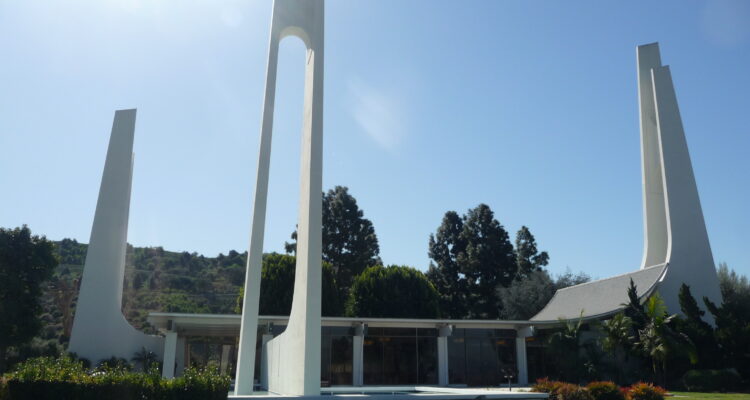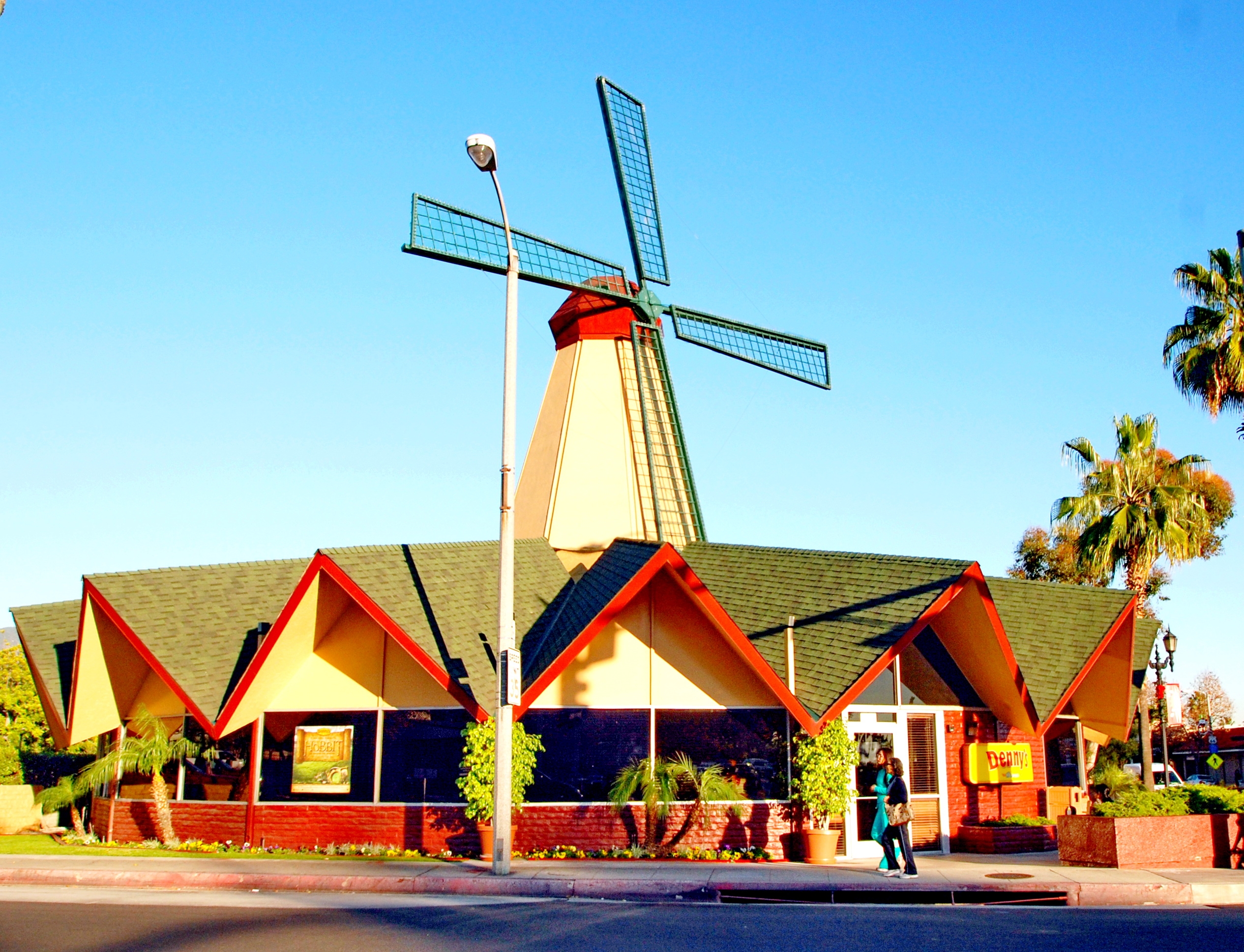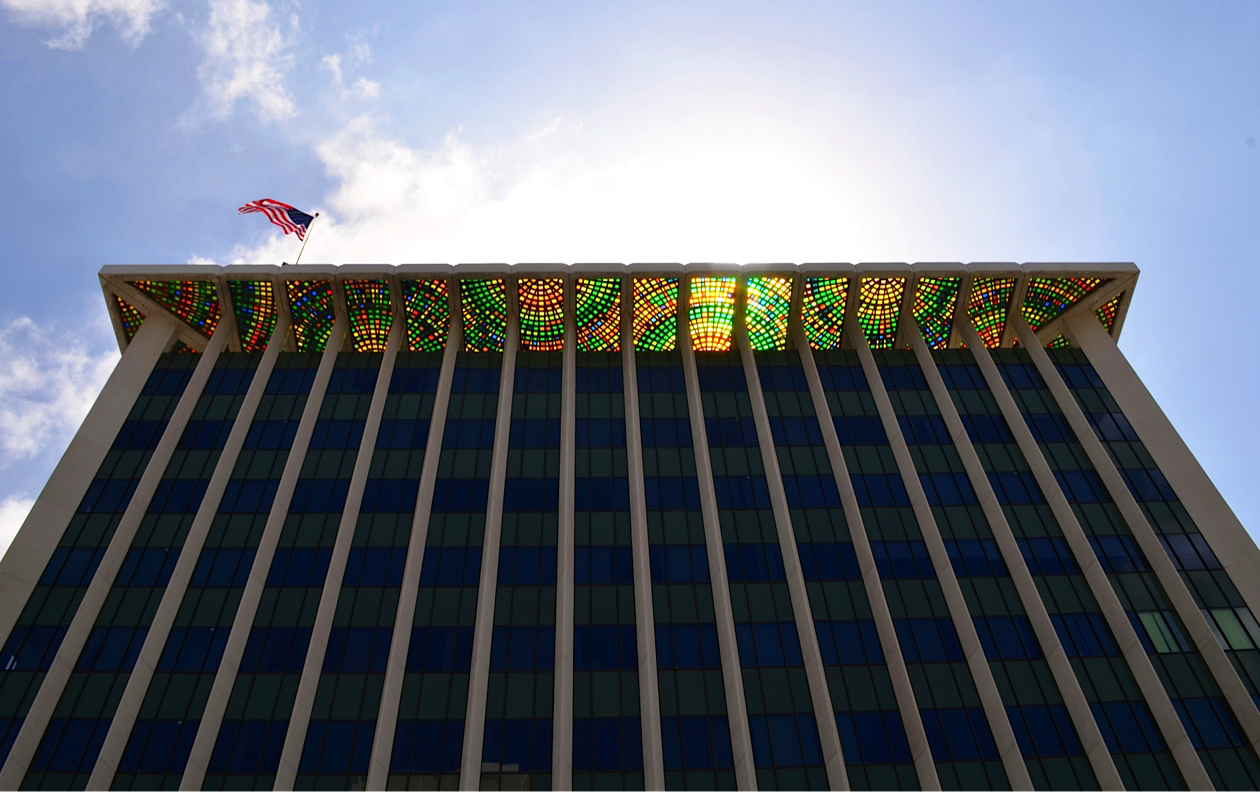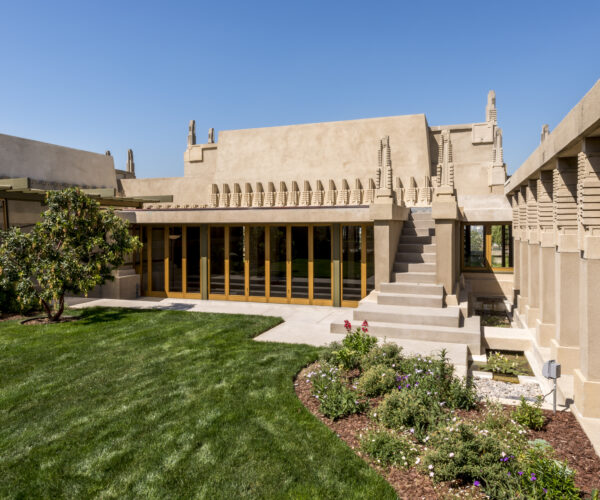
Place
Rose Hills Memorial Park Chapels
Whittier’s Rose Hills Memorial Park is the largest cemetery in the United States, covering hundreds of acres and encompassing many different memorial environments.Among its many buildings and landscaped areas are two remarkable Mid-Century Modern-style buildings designed by Albert C. Martin and Associates.
Place Details
Address
Get directions
Year
Style
Community
Whittier’s Rose Hills Memorial Park is the largest cemetery in the United States, covering hundreds of acres and encompassing many different memorial environments. It was founded in 1914 and continues to grow, with much of its land yet unused. Among its many buildings and landscaped areas are two remarkable Mid-Century Modern-style buildings designed by Albert C. Martin and Associates.
Hillside Chapel, completed in 1956, is a dynamic, diamond-shaped building with an angled roof that seems ready to take off into the sky were it not anchored to the ground by massive stone-clad walls. It is dominated by twenty-two-foot-high windows on the front façade, which flood the interior with light; a rose-tinted skylight gives the room the effect of a never-ending sunrise. This chapel is said to have perfect acoustics.
Martin completed a second building, the Sky Church, in 1956, but it was heavily damaged by the 1987 Whittier earthquake and had to be demolished.
Memorial Chapel was completed in 1964, in honor of the son of Rose Hills’ founder. It is a one-story, pavilion-type building clad mostly in floor-to-ceiling glass, with a flat roof that sweeps dramatically skyward at one end to join a soaring spire. The roof’s curve shelters a span of stained glass windows. Three enormous, angled spires, each ninety feet in height and blindingly white in color, rise from a reflecting pool that surrounds the chapel.
The chapel’s landscape was designed by prominent landscape architects Cornell, Bridgers and Troller. Rose Hill contains many lovely buildings spanning the twentieth century and into the twenty-first, but its A. C. Martin-designed buildings are particularly noteworthy.


